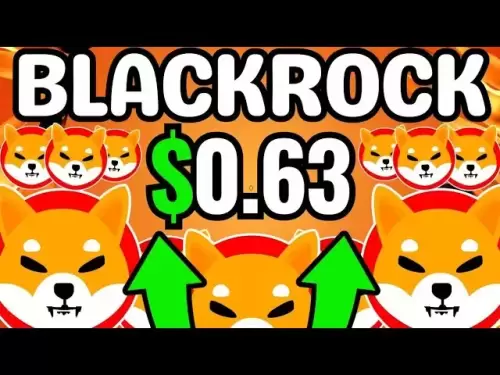-
 Bitcoin
Bitcoin $117700
-0.20% -
 Ethereum
Ethereum $3587
1.19% -
 XRP
XRP $3.422
-0.97% -
 Tether USDt
Tether USDt $1.000
-0.02% -
 BNB
BNB $733.3
0.69% -
 Solana
Solana $177.3
0.36% -
 USDC
USDC $0.9998
-0.01% -
 Dogecoin
Dogecoin $0.2446
1.42% -
 TRON
TRON $0.3183
-2.35% -
 Cardano
Cardano $0.8262
1.07% -
 Hyperliquid
Hyperliquid $44.37
-0.24% -
 Stellar
Stellar $0.4597
-0.87% -
 Sui
Sui $3.841
2.27% -
 Chainlink
Chainlink $18.44
3.20% -
 Hedera
Hedera $0.2658
1.54% -
 Bitcoin Cash
Bitcoin Cash $518.2
0.50% -
 Avalanche
Avalanche $24.38
4.08% -
 Shiba Inu
Shiba Inu $0.00001491
1.30% -
 Litecoin
Litecoin $112.7
10.87% -
 UNUS SED LEO
UNUS SED LEO $8.991
0.16% -
 Toncoin
Toncoin $3.183
-0.13% -
 Polkadot
Polkadot $4.377
3.56% -
 Uniswap
Uniswap $10.16
1.35% -
 Monero
Monero $325.1
2.08% -
 Ethena USDe
Ethena USDe $1.001
-0.01% -
 Bitget Token
Bitget Token $4.922
0.29% -
 Pepe
Pepe $0.00001343
3.62% -
 Dai
Dai $0.9999
-0.01% -
 Aave
Aave $319.5
-0.89% -
 Bittensor
Bittensor $416.3
1.23%
Should we exit the market when the TSI indicator forms a head and shoulders top pattern in the overbought zone?
A head and shoulders pattern on the TSI in overbought territory may signal weakening momentum, but confirmation from price action and volume is crucial before exiting trades.
Jun 25, 2025 at 10:50 am

Understanding the TSI Indicator and Its Relevance in Cryptocurrency Trading
The True Strength Index (TSI) is a momentum oscillator commonly used by traders to identify overbought or oversold conditions in financial markets, including cryptocurrencies. It is calculated using double smoothing of price changes, which helps filter out noise and provides more reliable signals compared to other oscillators like RSI or MACD.
In the context of cryptocurrency trading, where volatility is high and false signals are common, understanding how the TSI behaves becomes crucial. When the TSI forms a head and shoulders top pattern in the overbought zone, it often raises concerns among traders about whether they should exit their positions.
What Does a Head and Shoulders Pattern on the TSI Indicate?
A head and shoulders pattern on the TSI typically reflects weakening momentum after a bullish move. This pattern consists of three peaks: the left shoulder, the head (the highest peak), and the right shoulder (lower than the head). The neckline is drawn by connecting the troughs between these peaks.
When this pattern appears in the overbought region—usually above a certain threshold value like +25 or +30—it suggests that the upward momentum is losing strength and a potential reversal might be imminent. However, this doesn't automatically mean that a trader should exit the market immediately. Several factors need to be considered before making such a decision.
Confirming the TSI Signal with Price Action and Volume
It’s essential not to rely solely on the TSI indicator for making trading decisions. Confirmation from price action and volume is necessary to validate the signal. If the underlying asset's price does not confirm the head and shoulders pattern shown on the TSI, the reversal may not occur.
- Check if the price chart also shows a similar head and shoulders structure.
- Observe whether volume decreases during the formation of the right shoulder, which supports a bearish reversal.
- Watch for a break below the neckline both on the TSI and price chart to increase the probability of a valid signal.
Without confirmation from multiple sources, acting purely on the TSI head and shoulders pattern can lead to premature exits and missed profit opportunities.
Assessing Market Conditions and Trend Context
Market context plays a vital role in interpreting any technical signal. In strong uptrends, especially within bull markets in crypto, overbought readings on oscillators like the TSI can persist for longer periods without leading to a reversal. Exiting based solely on an overbought head and shoulders pattern may result in selling too early.
- Determine whether the overall trend is bullish or bearish using tools like moving averages or trendlines.
- Consider the time frame being analyzed; short-term patterns may not be significant in the context of long-term trends.
- Look at broader market sentiment, news events, or macroeconomic data that could influence prices regardless of technical indicators.
By evaluating the bigger picture, traders can avoid being misled by isolated signals and make more informed decisions.
Risk Management and Trade Execution Considerations
Even if a TSI head and shoulders pattern in the overbought zone seems convincing, proper risk management should guide trade execution rather than pure speculation. Traders should assess their current position size, stop-loss levels, and profit targets before deciding to exit.
- Consider partial exits instead of closing the entire position at once.
- Place stop-loss orders above the recent swing high to protect against false breakouts.
- Evaluate reward-to-risk ratios to determine whether staying in the trade still makes sense.
If the risk-reward ratio remains favorable and the trend is intact, exiting entirely might not be the best strategy. Instead, adjusting position size or trailing stops could help manage exposure while still participating in potential further gains.
How to Interpret TSI Overbought Levels Accurately
Overbought levels on the TSI don’t necessarily indicate an immediate reversal. They simply suggest that momentum has reached an extreme. Understanding how to interpret these levels accurately is key to avoiding unnecessary exits.
- Monitor divergence between TSI and price; negative divergence strengthens the case for a reversal.
- Use dynamic thresholds instead of fixed ones to adapt to changing market conditions.
- Combine TSI with complementary indicators like Bollinger Bands or moving average crossovers for better accuracy.
Recognizing that overbought conditions can last during strong trends prevents traders from prematurely exiting winning trades.
Frequently Asked Questions
1. What is the ideal threshold for overbought on the TSI indicator?
While many traders use +25 or +30 as overbought levels, there’s no universally correct value. It depends on the asset being traded and its historical behavior. Some assets may frequently reach higher TSI values during strong rallies, so traders should adjust thresholds accordingly.
2. Can the TSI indicator be used effectively in sideways markets?
Yes, but with caution. In ranging markets, TSI can provide useful signals when combined with support and resistance levels. However, due to its lagging nature, it may not capture quick reversals effectively in choppy conditions.
3. How do I differentiate between a valid head and shoulders pattern and a false one on the TSI?
A valid pattern should have clear peaks and troughs forming the shoulders and head, with a confirmed break below the neckline. False patterns often lack symmetry or fail to see price reacting to the neckline breakout.
4. Is it advisable to enter short positions when TSI forms a head and shoulders in overbought territory?
Shorting based solely on TSI patterns is risky. Confirmation from price action, candlestick patterns, and volume is essential before initiating a short trade. Additionally, consider market sentiment and avoid counter-trend trades in strong bull phases.
Disclaimer:info@kdj.com
The information provided is not trading advice. kdj.com does not assume any responsibility for any investments made based on the information provided in this article. Cryptocurrencies are highly volatile and it is highly recommended that you invest with caution after thorough research!
If you believe that the content used on this website infringes your copyright, please contact us immediately (info@kdj.com) and we will delete it promptly.
- WLFI Token Trading Approved: From Trump Ties to Community Votes
- 2025-07-20 09:10:12
- CoinDCX's $44.2 Million Security Breach: A Wake-Up Call for Crypto Exchanges
- 2025-07-20 08:30:13
- Trump, WLFI, and Token Release: A New York Minute on Crypto
- 2025-07-20 08:30:13
- Ripple's RLUSD: The Bluechip Stablecoin Set to Disrupt the Market?
- 2025-07-20 08:50:11
- Bitcoin Price Action: Is Weakening Demand on the Horizon?
- 2025-07-20 08:50:11
- Ripple's RLUSD: Top-Ranked Stablecoin Shaking Up the Market
- 2025-07-20 08:55:12
Related knowledge

Advanced RSI strategies for crypto
Jul 13,2025 at 11:01am
Understanding the Basics of RSI in Cryptocurrency TradingThe Relative Strength Index (RSI) is a momentum oscillator used to measure the speed and chan...

Crypto RSI for day trading
Jul 12,2025 at 11:14am
Understanding RSI in the Context of Cryptocurrency TradingThe Relative Strength Index (RSI) is a momentum oscillator used to measure the speed and cha...

Crypto RSI for scalping
Jul 12,2025 at 11:00pm
Understanding RSI in the Context of Crypto TradingThe Relative Strength Index (RSI) is a momentum oscillator widely used by traders to measure the spe...

What does an RSI of 30 mean in crypto
Jul 15,2025 at 07:07pm
Understanding RSI in Cryptocurrency TradingRelative Strength Index (RSI) is a momentum oscillator widely used in cryptocurrency trading to measure the...

What does an RSI of 70 mean in crypto
Jul 13,2025 at 06:07pm
Understanding the RSI Indicator in Cryptocurrency TradingThe Relative Strength Index (RSI) is a widely used technical analysis tool that helps traders...

Does RSI work in a bear market for crypto
Jul 16,2025 at 01:36pm
Understanding RSI in Cryptocurrency TradingThe Relative Strength Index (RSI) is a momentum oscillator used by traders to measure the speed and change ...

Advanced RSI strategies for crypto
Jul 13,2025 at 11:01am
Understanding the Basics of RSI in Cryptocurrency TradingThe Relative Strength Index (RSI) is a momentum oscillator used to measure the speed and chan...

Crypto RSI for day trading
Jul 12,2025 at 11:14am
Understanding RSI in the Context of Cryptocurrency TradingThe Relative Strength Index (RSI) is a momentum oscillator used to measure the speed and cha...

Crypto RSI for scalping
Jul 12,2025 at 11:00pm
Understanding RSI in the Context of Crypto TradingThe Relative Strength Index (RSI) is a momentum oscillator widely used by traders to measure the spe...

What does an RSI of 30 mean in crypto
Jul 15,2025 at 07:07pm
Understanding RSI in Cryptocurrency TradingRelative Strength Index (RSI) is a momentum oscillator widely used in cryptocurrency trading to measure the...

What does an RSI of 70 mean in crypto
Jul 13,2025 at 06:07pm
Understanding the RSI Indicator in Cryptocurrency TradingThe Relative Strength Index (RSI) is a widely used technical analysis tool that helps traders...

Does RSI work in a bear market for crypto
Jul 16,2025 at 01:36pm
Understanding RSI in Cryptocurrency TradingThe Relative Strength Index (RSI) is a momentum oscillator used by traders to measure the speed and change ...
See all articles

























































































